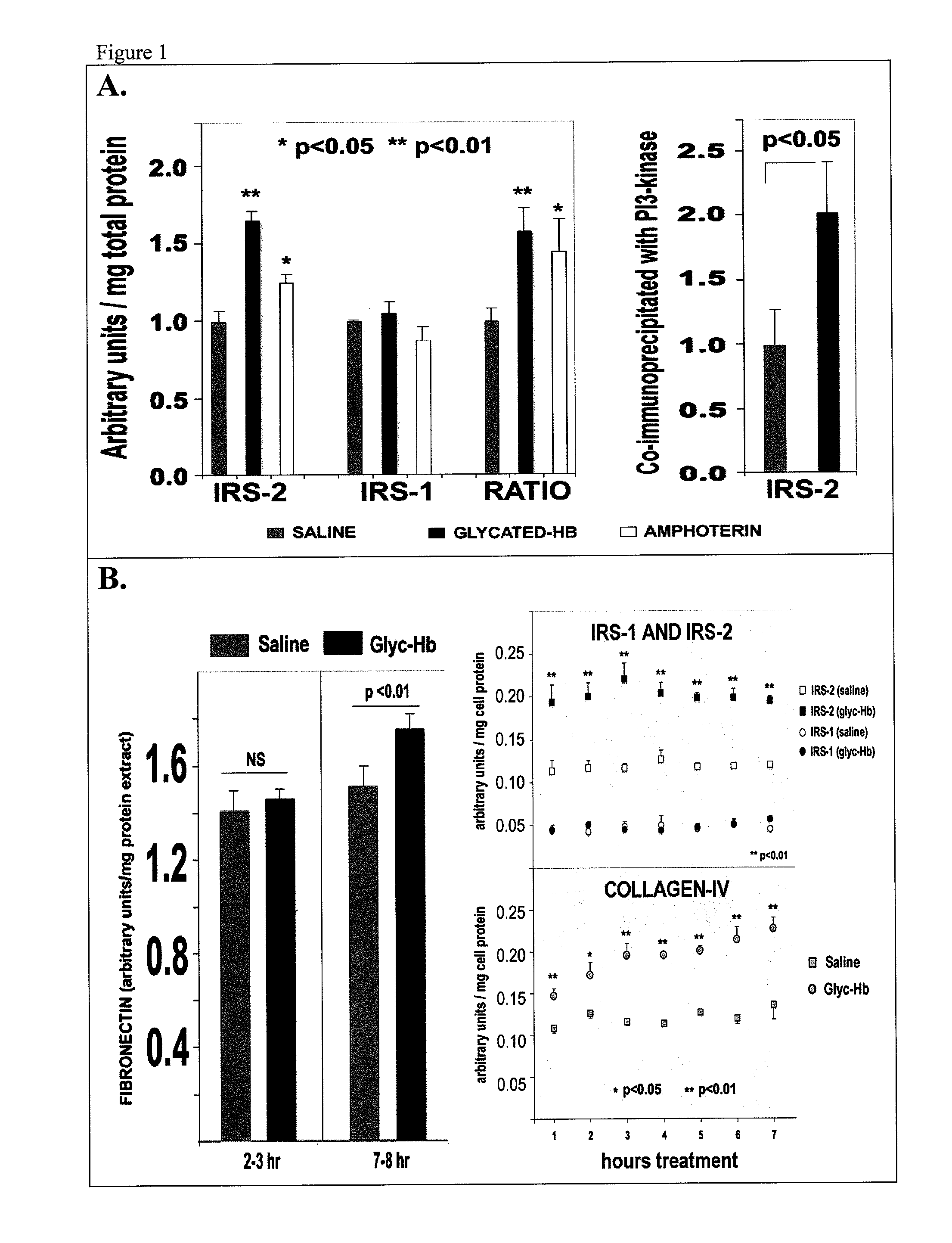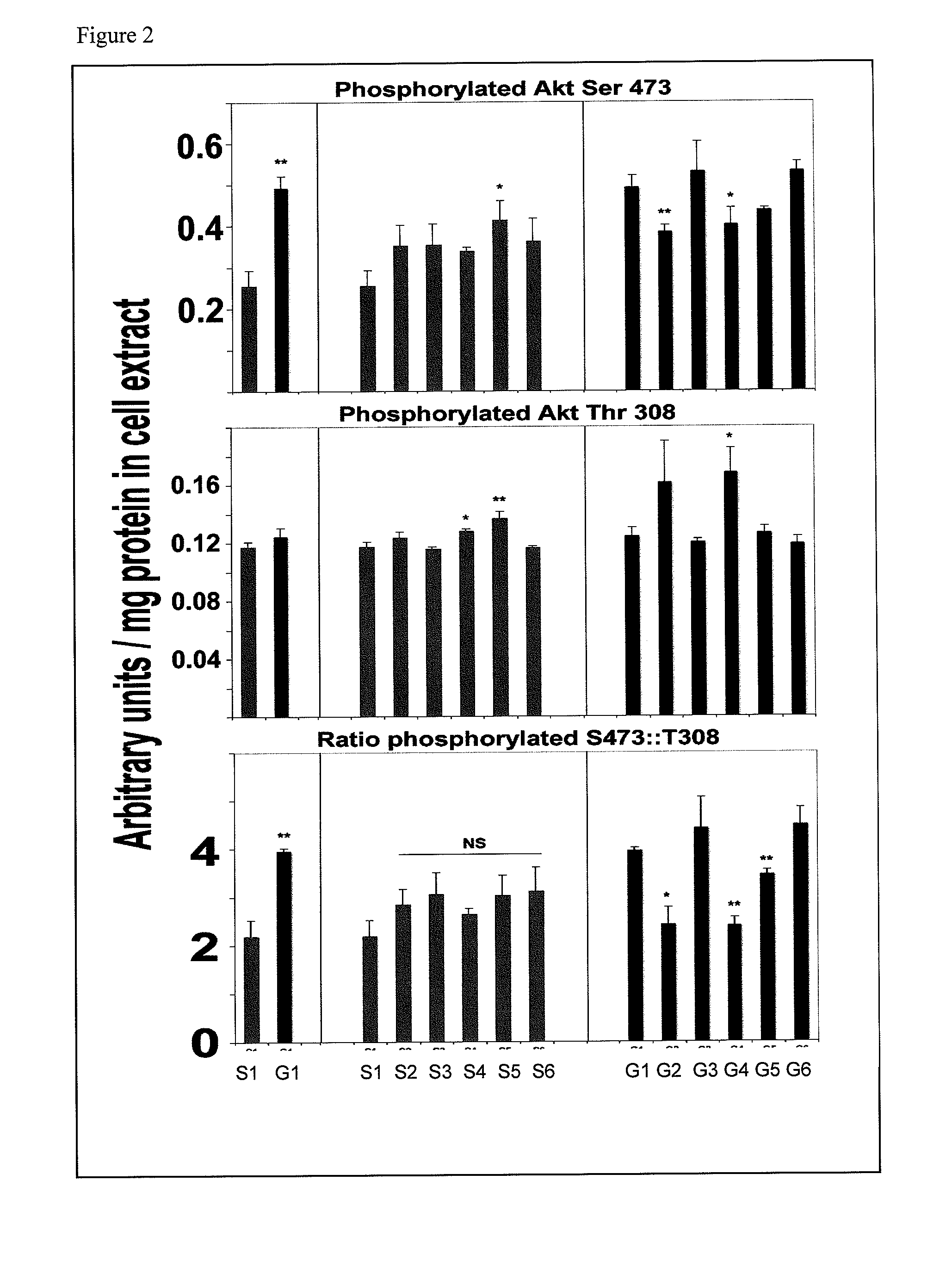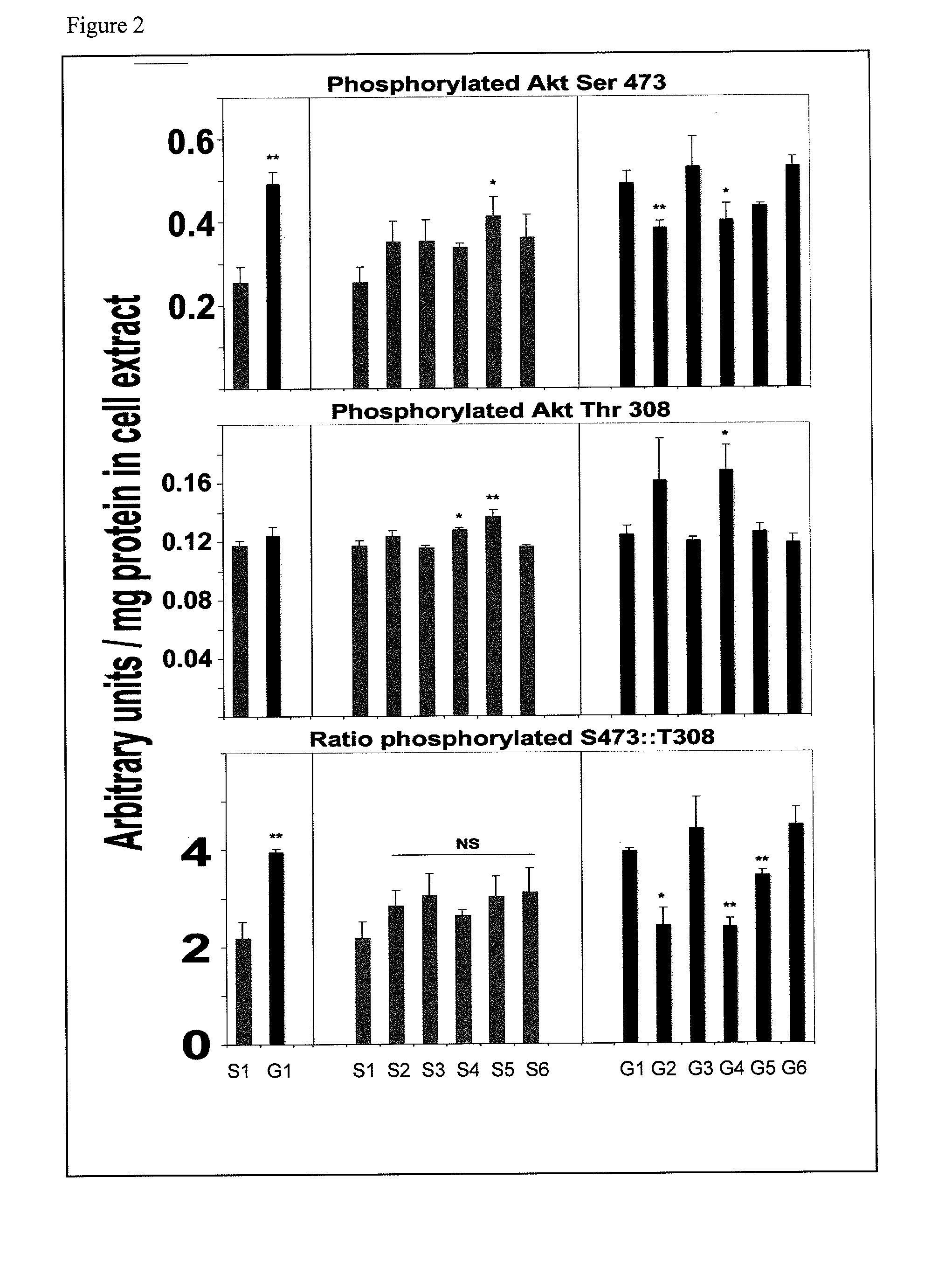Adaptive biochemical signatures
- Summary
- Abstract
- Description
- Claims
- Application Information
AI Technical Summary
Benefits of technology
Problems solved by technology
Method used
Image
Examples
example 1
Adaptive Biochemical Signatures from Kidney Cells
[0111]Sixteen-week-old db / db mice exhibit significantly elevated blood glucose and albuminuria. Kidney mesangial cell matrix expansion and collagen-IV synthesis correlate with disease progression, but the underlying mechanism is unclear. Adaptive biochemical datasets were generated in cultured 293 kidney cells and in db / db mice.
[0112]Reagents: Humanin (WT) and S14G-Humanin were purchased from American Peptide Co, Sunnyvale, Calif. NPKC (AKKGFYKKKQCRPSKGRKRGFCWPSIQITSLNPEWNET; SEQ ID NO:6) and P38 (AKKGFYKKKQCRPSKGRKRGFCWAPSRKPALRVIIPQAGK; SEQ ID NO:7) peptides contain the MBD domain of IGFBP-3, which provides effective biodistribution, cell internalization and nuclear delivery for linked sequences were synthesized and purified by Genenmed Synthesis, Inc., S. San Francisco, Calif. Glycated-hemoglobin, amphoterin, TNF-alpha, EGF, resistin, insulin, SDKP, caffeine, rapamycin, and the antibodies anti-IRS1, anti-RAGE, anti-Fibronectin, ant...
example 2
Adaptive Signatures from Cancer Cells
[0133]Cell lines were challenged with glycated hemoglobin as described for human kidney cells in Example 1. Deltas (difference readings) of selected biochemical readouts were collected and analyzed to generate adaptive signatures.
[0134]Cells and cell culture. All cell lines were obtained from Cambrex or the American Type Culture Collection (ATCC). They are well characterized and have been extensively used in vitro and in vivo. Breast cancer cell lines (MCF7, MDA-MB-435, MDA-MB-231, MX-1), leukemia cell lines (RPMI-8226, CCRF-CEM, MOLT-4), and prostate cancer cell lines (PC3, DU145, LNCAPs) were cultured in RPMI-1640 media supplemented with 5% FBS. Paired non-cancer and breast cancer cell lines (CRL-7481 / CRL-7482, CRL-7364 / CRL-7365) were cultured in DMEM media supplemented with 10% FBS. Normal cell lines such as MCF-10A, HMEC and HTB-125 were cultured in A, B, C media, serum-free, respectively. Cancer and metastatic cancer cell pairs (CCL-227 / CCL-...
example 3
Novel Inhibitors of Albuminuria
[0140]Derivation of nephrilin peptide. The peptide nephrilin was derived by fusing PRR-5 / Protor sequences to the metal-binding domain (MBD) of IGFBP-3 which specifies cell targeting and internalization. Overlapping sequences from the PRR5-Rictor interaction domain were fused to MBD and tested for bioactivity. Peptide (20 ug / ml) bioactivity was measured in cultured human HEK293 kidney cells as previously described (Singh B K and Mascarenhas D D [2008]Am J. Nephrol. 28: 890-899). Effectiveness was determined relative to 20 ug / ml humanin by measuring reversal of the elevation in levels of IRS-2, Akt1 and collagen-IV caused by treatment of HEK293 cells with glycated hemoglobin for 24 hours. Activities statistically different from the humanin control are reported (Table 4). The peptide nephrilin was selected for further study.
TABLE 4Bioactivity of PRR5 peptides in HEK293 cells.RELATIVE ACTIVITYPeptideSequenceIRS-2AKT1Col-IVPEP11Ac-HESRGVTEDYLRLE1.14*1.10*NS...
PUM
| Property | Measurement | Unit |
|---|---|---|
| Mass | aaaaa | aaaaa |
| Mass | aaaaa | aaaaa |
| Mass | aaaaa | aaaaa |
Abstract
Description
Claims
Application Information
 Login to view more
Login to view more - R&D Engineer
- R&D Manager
- IP Professional
- Industry Leading Data Capabilities
- Powerful AI technology
- Patent DNA Extraction
Browse by: Latest US Patents, China's latest patents, Technical Efficacy Thesaurus, Application Domain, Technology Topic.
© 2024 PatSnap. All rights reserved.Legal|Privacy policy|Modern Slavery Act Transparency Statement|Sitemap



